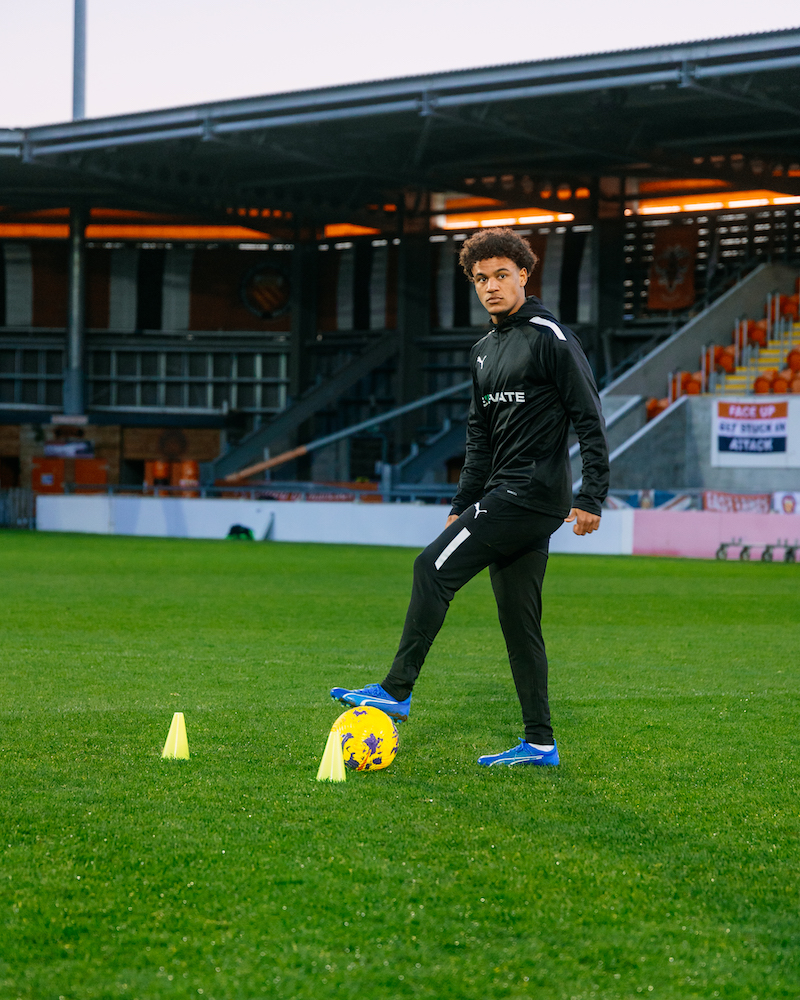Kicking a football isn’t just about swinging your leg wildly and hoping for the best; it’s an art that requires practice, technique, and a whole lot of patience. Whether you’re trying to master field goals in football, precision kicks in soccer, or even just impressing your friends at the park, understanding the fundamentals of kicking can elevate your game. In this blog post, we’ll delve into the essential techniques and tips that will help you kick a football with both power and precision. So, let’s lace up those cleats and get started!
Understanding the Basics of Football Kicking

The world of football kicking can be quite intricate, filled with various techniques and styles depending on the type of football you're playing. But before we dive into the specifics, let’s establish some foundational concepts that apply across the board.
First, let’s break down the types of kicks you might encounter:
- Place Kicks: Common in gridiron football, where the ball is held in place for the kicker.
- Punt Kicks: The ball is dropped and kicked before it touches the ground, primarily used for moving the ball down the field.
- Soccer Kicks: In soccer, kicking involves various techniques like instep drives, volleys, and chips.
Now that we’ve identified the types, let’s look at some critical components of a successful kick:
| Component | Description |
|---|---|
| Approach | Your run-up to the ball sets the tone. A well-timed approach is crucial for balance. |
| Foot Placement | The non-kicking foot should be beside the ball as it acts as a pivot point, guiding your kick. |
| Kicking Technique | The way you make contact can vary; aim to strike the ball with a firm and confident motion. |
| Follow-Through | Don’t forget about your follow-through; it helps with both power and accuracy. |
Remember, kicking is as much about mindset as it is about technique. Stay relaxed, visualize your kick, and don’t rush the process. Mastering the basics lays the groundwork for enhancing your kicking power and precision!
Essential Techniques for Powerful Kicks

When it comes to kicking a football with power, there are several essential techniques that you really need to master. These techniques can make all the difference in your game, helping you deliver powerful kicks with greater ease and consistency. Let's break them down:
- Proper Stance: Start with your feet shoulder-width apart and your non-kicking foot beside the ball. Your body weight should be balanced, ready to shift forward as you kick.
- Kicking Foot Position: As you swing your kicking foot, ensure that your ankle is locked and your toes are pointed down. This position helps in generating more force and improves ball control.
- Follow Through: After making contact with the ball, continue your kicking motion. A strong follow-through helps to maintain the power of your kick and ensures a more accurate trajectory.
- Engage Your Core: Power doesn’t just come from your legs; your core plays a crucial role. Engaging your core while kicking helps to stabilize your body and can significantly enhance the power behind your kick.
- Practice the Approach: A proper approach to the ball can set you up for a strong kick. Usually, a few quick steps leading into your kick will allow you to build momentum.
By focusing on these techniques and incorporating them into your practice routine, you'll find that your kicking power improves significantly over time.
Improving Accuracy in Every Kick
When you're able to kick a football with powerful precision, the game becomes a lot more enjoyable and effective. Accuracy is vital, especially when you're in a match situation. Here are some tips to help you improve accuracy in every kick:
- Focus on Your Target: Always keep your eyes on the target as you prepare to strike the ball. This mental focus will improve your chances of hitting your desired spot.
- Use the Right Techniques: Just as with powerful kicks, accuracy also requires a mix of technique. Pay attention to your body positioning, follow-through, and the placement of your non-kicking foot.
- Practice Consistently: Set aside time for practice dedicated solely to accuracy. Use cones or other markers to simulate target areas on the field. Shooting towards them repeatedly will help you sharpen your aim.
- Analyze Your Kicks: Record your kicks using video equipment or simply have a friend watch you. Analyze your form and technique. Look for areas of improvement in your approach or follow-through.
- Stay Calm Under Pressure: During matches, the pressure can make it hard to maintain accuracy. Practice mindfulness techniques to stay composed when it matters most.
Improving your accuracy takes time, but with dedication and focus, you will see improvements in no time!
Common Mistakes to Avoid
As you embark on your journey to mastering the art of kicking a football, it's essential to be aware of the common mistakes that many players make. Avoiding these pitfalls can significantly enhance your kicking game.
- Incorrect Foot Placement: A lot of beginners don't realize how crucial foot placement is. Kicking with the incorrect part of your foot can result in lack of power and accuracy. Make sure you're using the upper part of your foot to strike the ball.
- Neglecting Your Approach: Many players rush their approach, which affects the accuracy and power of their kick. Take time to find a comfortable run-up, keeping it consistent every time you kick.
- Overlooking Body Positioning: Poor body alignment can lead to disastrous results. Ensure that your non-kicking foot is planted beside the ball, and your hips are aligned toward your target for better direction.
- Lack of Follow-Through: A common mistake is stopping your kick too soon. Proper follow-through not only adds power but also helps in keeping the ball on target. Focus on extending your kicking leg fully after contact.
- Ignoring Practice: Finally, many players think they can master kicking without consistent practice. Make kicking a regular part of your training routine to build muscle memory and improve your technique.
Practice Drills for Enhanced Performance
Now that you're aware of common mistakes, let’s get to the good part — the drills! Incorporating drills into your training routine will improve both your technique and confidence.
| Drill Name | Description | Frequency |
|---|---|---|
| Target Practice | Set up targets (cones, a goalpost) and aim to hit them. This drill helps with accuracy. | 3 times a week |
| Distance Kicking | Measure your distance and kick for maximum range. This builds power. | 2 times a week |
| Controlled Kicking | Kick from different angles and distances, focusing on control and technique. | Daily |
| Combination Drill | Combine running with kicking, simulating match conditions. This increases stamina. | Weekly |
By integrating these drills into your practice, you’ll not only enhance your kicking ability but also make the process more enjoyable. So lace up those boots, find a field, and get kicking!
Mastering the Art of Kicking a Football with Power and Precision
Kicking a football is both an art and a science, blending technique, strength, and focus. Whether you're a beginner or an experienced player looking to refine your skills, mastering the elements of a powerful and precise kick can dramatically improve your game. Below are key components and strategies to help you achieve this goal.
Key Components of a Powerful Kick
- Foot Positioning: Position your non-kicking foot parallel to the ball for better accuracy.
- Body Alignment: Keep your body balanced and aligned towards your target.
- Follow Through: Allow your kicking leg to continue its motion after contact with the ball to generate power.
Essential Techniques
| Technique | Description |
|---|---|
| Approach Angle | Approach the ball at a 30-degree angle for optimal power. |
| Contact Point | Strike the ball with the laces of your foot for maximum impact. |
| Weight Transfer | Transfer your body weight from your back foot to your front foot during the kick. |
Practice Drills
- *Target Kicking: Set up targets at varying distances and aim for precision.
- Power Kicks: Practice kicking against a wall or backstop to develop strength.
- Footwork Drills:* Use agility ladders to enhance your foot speed and coordination.
By combining proper technique, consistent practice, and focus on key components, anyone can master the art of kicking a football with both power and precision. Remember, every great kicker started with the basics—so keep practicing!










